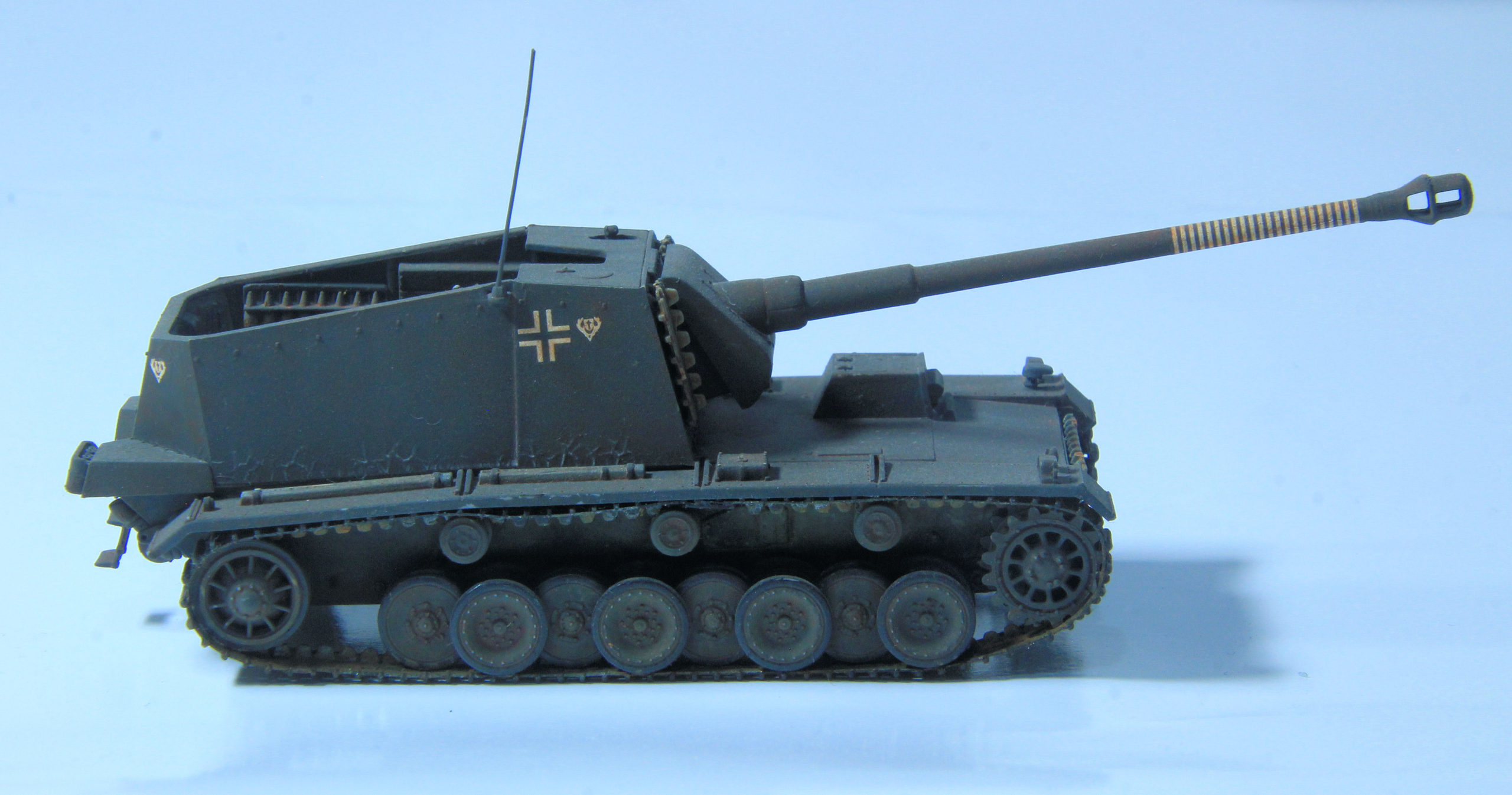12.8cm Sf. L/61 (Pz.Sf.V) Sturer Emil
The 12.8 cm Selbstfahrlafette auf VK 30.01(H) “Sturer Emil” (German for “Stubborn Emil”) was an experimental World War II German self-propelled anti-tank gun. It was based on the Henschel VK30.01 chassis and armed with a Rheinmetall 12.8 cm K40 L/61 gun (based on the 12.8 cm FlaK 40). This gun could traverse 7° to each side, elevate 10° and depress -15°. It carried 15 rounds for the main gun.
The chassis was left over from Henschel’s submission for the canceled VK 30.01 heavy tank program, but the hull was stretched and an extra road wheel added to its overlapped and interleaved Schachtellaufwerk roadwheel-based suspension system, to accommodate the large gun, which was mounted on a pedestal ahead of the engine. A large, open-topped fighting compartment, much like that fitted to the Panzer IV-based Hummel self-propelled 15 cm howitzer, was built where the turret was intended to go in the original design.
Two vehicles (named after Max and Moritz) were built, both of which served on the Eastern Front. One vehicle was destroyed, the other captured at Stalingrad in January 1943, with 22 kill marks painted on the barrel. This captured vehicle is now displayed in the collection on the Kubinka Tank Museum.
12.8cm Sf. L/61 (Pz.Sf.V) Sturer Emil 1:72 Scale Model by Trumpeter

12.8cm Sf. L/61 (Pz.Sf.V) Sturer Emil 1:72 Scale Model by Trumpeter 
12.8cm Sf. L/61 (Pz.Sf.V) Sturer Emil 1:72 Scale Model by Trumpeter 
12.8cm Sf. L/61 (Pz.Sf.V) Sturer Emil 1:72 Scale Model by Trumpeter 
12.8cm Sf. L/61 (Pz.Sf.V) Sturer Emil 1:72 Scale Model by Trumpeter 
12.8cm Sf. L/61 (Pz.Sf.V) Sturer Emil 1:72 Scale Model by Trumpeter 
12.8cm Sf. L/61 (Pz.Sf.V) Sturer Emil 1:72 Scale Model by Trumpeter 
12.8cm Sf. L/61 (Pz.Sf.V) Sturer Emil 1:72 Scale Model by Trumpeter 
12.8cm Sf. L/61 (Pz.Sf.V) Sturer Emil 1:72 Scale Model by Trumpeter 
12.8cm Sf. L/61 (Pz.Sf.V) Sturer Emil 1:72 Scale Model by Trumpeter Box Art
